A Transatlantic Forager
In this pandemic we find ourselves asking questions about the future as we try to make sense of our place in the world and our connection to it. Many have found solace and pleasure in things that have taken on a new life in the time of COVID: sourdough starters, the Getty Museum challenge, or exercising with Joe (and Rosie!) are all unexpected ways in which many are coping with the new normal.
I have found my own solace and pleasure in something that I have been doing for years; connecting with the land, foraging for local, sustainable ingredients, and using them to make free food. Below is one of my first and most successful dishes—wild elderflower panna cotta with wild cherry compote, the fruits and flowers gathered from within a mile of my home.

For me these small but powerful acts took on a greater significance after first encountering the sight of empty supermarket shelves created by COVID panic buying. Ideas of scarcity in a world rapidly transforming under climate change had already informed much of what I was doing, but now these aspects of our times have become inescapable and urgent in the global pandemic.
But first a little context: I’m from Belfast in the north of Ireland. No, it’s ok, it’s ok! I promise I’m not going to talk about politics! I mean, I could, but, but…I won’t…I promise… This piece is about the value of finding our own spaces, and making our own connections within them, even in a time when we are being asked to distance and disconnect. It’s about small acts that might remind us of how to care for ourselves and our environment. Leaving that unique city years ago, and calling quite a few places home since then, has meant that simple things like taking a walk, gardening, identifying local plants/animals, or foraging, have for a long time signified so much more than normal therapeutic endeavours in their own right. They have helped foster a deeper sense of belonging and connection.
At the ripe-ish age of 34 I made the first major move, relocating to the sights and sounds of Bristol, a cool, green-minded, foodie city, and capital of England’s West Country. It was a move made for love and one that was so much easier for that reason. But any new place throws up issues of dislocation. It is surprising that a mere 257 miles as the crow flies can feel so markedly different. For one, it rained a lot less! Foraging was a way of getting to know this new place, making it part of me and me of it.
While out on walks – the only true way to unravel a city’s secrets – I took pleasure spotting different trees and bushes, especially those bearing fruits. To a person who is more than a little greedy, and a with the collector’s gene to boot, this is the stuff that makes a heart
beat faster.

Alongside bounteous apples, a reminder of the West Country’s long history of cider making, there are, if you know where to look, branches laden with cherries, sloes, walnuts, and hazels. Many of these discoveries were on public lands, and frequently left to rot or be eaten by animals. But I had other ideas! Taking note of locations and cropping times, I naturally began to fall into sync with the rhythms of the year; August yellow plums in Badock’s Woods, October walnuts on The Downs, much-of-the-year, chives, everywhere, really…
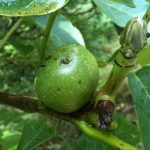
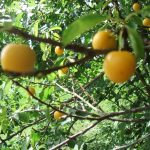
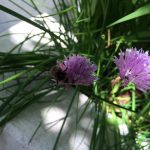
Knowing when and where to find such edible delicacies is not only enormously satisfying but grounding too. Pointing a fellow-forager in their general direction adds to this: little speaks more to connections and belonging than the sharing of intimate, local knowledge. It is true, however, that I may grow a little quieter on the subject of mushrooms. After all, every forager is allowed a secret or two! Field Blewit pie might be a pleasure to share but the location of said mushrooms, perhaps, less so…
My first taste of these fungal delights came after stumbling across a particularly inviting patch late one November. After proper identification (always vital!) I eagerly picked, cleaned, and cooked them within the hour. It was a meal that more than just sated. Beyond sustainability and self-sufficiency, it was a link back to earlier times, when wild mushrooms were harvested from the land with knowledge passed down through generations.
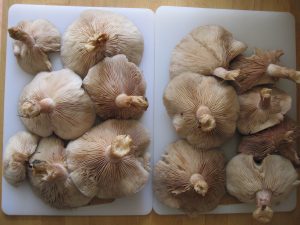
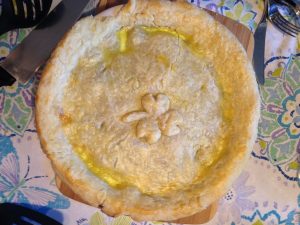
Sadly there are some parts of this collective knowledge that can only now be imagined—sustainability is vital in all that a forager does. I have seen large swathes of forest floor cleared of wild garlic, foraging commodified for trendy restaurants and commercial gain. This not only takes from everyone else but can also lead to the local disappearance of the plants in specific locations over time. Lolly Willowes by Sylvia Townsend Warner perfectly captures this sense of past abundance now lost. Set in the early 20th century it’s a story of a woman who rejects conformity to go into nature and ‘find out her own secret, if she had one’. At one point, Lolly escapes to a field brimming with cowslips. It is a wonderful image if you picture the photograph below multiplied out by thousands. There is mention too, of the ‘peggle’ wine that can be made from the delicate petals. It sounds magical and beyond our reality, and sadly now is. Cowslips are rare and any time I’ve been fortunate enough to encounter them, I’ve had to content myself with just a sniff to gain a sense of the sweet, apricot taste that was, not so long ago, enjoyed in plenty.
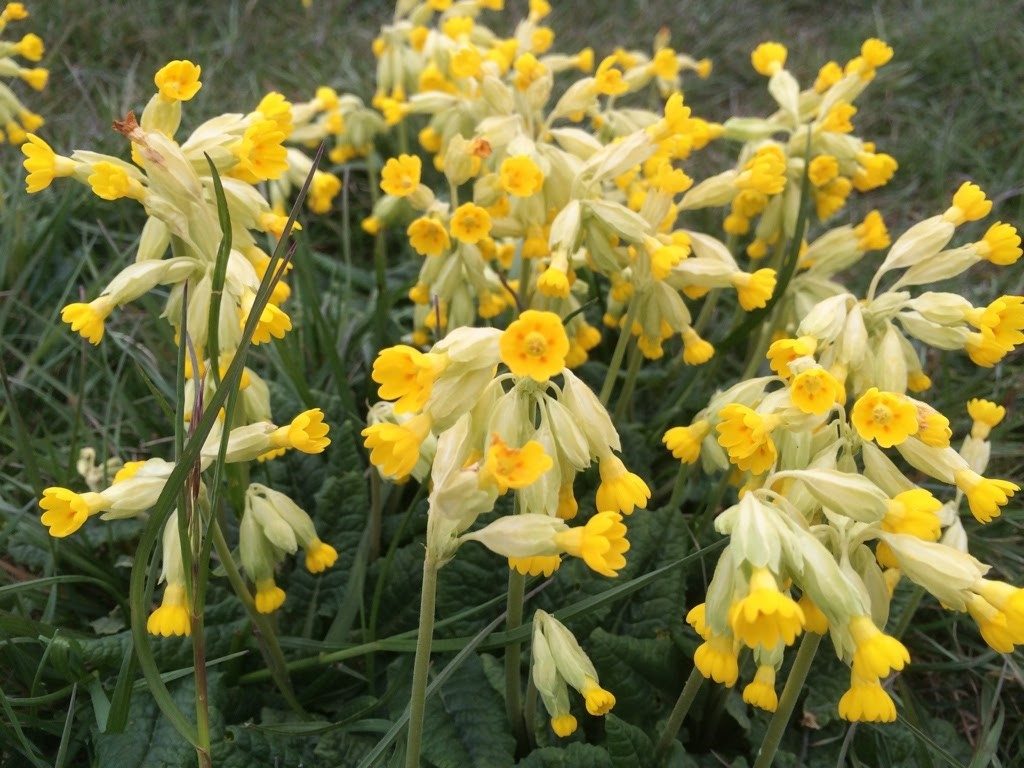
The magic of foraging is this ability to both transcend and connect, rooting us not only in the present but back to the past, to people here and now, and to those long gone and, of course, to the very land beneath our feet even, occasionally, to land rather more far away. Foraging becomes an act that, like the myriad mycelial networks within the earth, stretches unseen out and around us endlessly. Even now the sweet-sharp bite of a blackberry can transport me at once to the side of a road, a purpled-mouthed, stained-fingered child, eating each new find straight from the bush, or the fragrance of rose hips will conjure up the memory of “itchy coos”, rose hip seeds placed down the shirt as a prank; hilarious fun if you were not the recipient. In this way the intensely individual becomes the communal.
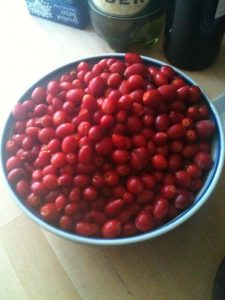
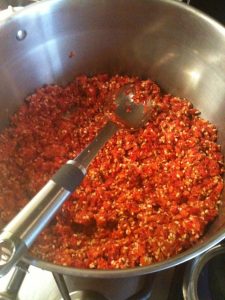
As an adult, I found myself removing these seeds for a very different reason. The tiny prickles are dangerous if ingested so they must be thoroughly separated out to create the wonder that is rose hip syrup. During WWII children were paid to collect these hips, 3d for each 1lb bag. Years later, treading across fields and along misty hedgerows, I often thought of them, braving the thorns decades before I was born for each and every bright little prize. A powerful source of vitamin C, it was and still is used to ward off colds and is much more delicious as a daily tonic than cod-liver oil. There are many other ways to enjoy the unmistakeable flavour; drizzled over pancakes, as a uniquely enticing ice cream, or even as a hedonistic splash in a glass of Cava! In these surreal times, especially, there is little that is quite as life-affirming. During my wife’s first pregnancy it was one of the few things that she could stomach without nausea. Rose hip syrup that is, not Cava.
I always smile when thinking of the attempts, sometimes successful, sometimes not, at making other such mouthwatering offerings as sloe gin, elderflower delight, and dandelion jam, all harvested from profusions in nearby hedgerows and meadows. And so, when after the best part of a decade it came time for me to move again, this time with two small children, I found it much easier than expected: memories such as these, and others, will connect me to that place forever.
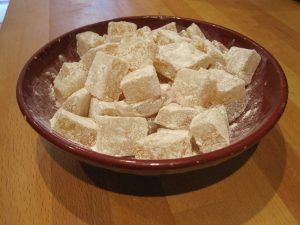
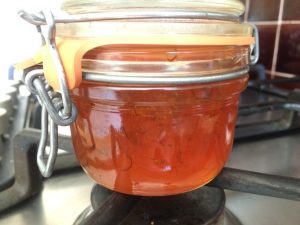
Returning to Ireland was like stepping back into comfortable shoes—a connection reawakened with ease. Although I was living in Galway in the very west of the country, this time much was familiar, if not a little wetter and wilder. The feel of the earth beneath my feet and the wind upon my face felt as natural as breathing, though it took a little more time to find the secret places that might bring a smile to a forager’s face. But they are there if you look. Wild garlic in Barna Woods for soup, blackberries for crumbles by the railway tracks, and even whin, for wine, on the banks of the rushing Corrib.

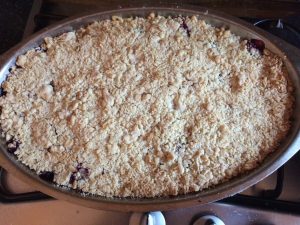
These discoveries, already familiar from my childhood, helped me cultivate a more localised sense of belonging, of living and being in a specific location. Everywhere is like somewhere but each particular spot is unique. Foraging creates its own reassuring continuity and purpose while still introducing newness, like the pleasure of looking for the edible seaweed dulse/dillisk, and with helpers too! I think they may have become sidetracked here…
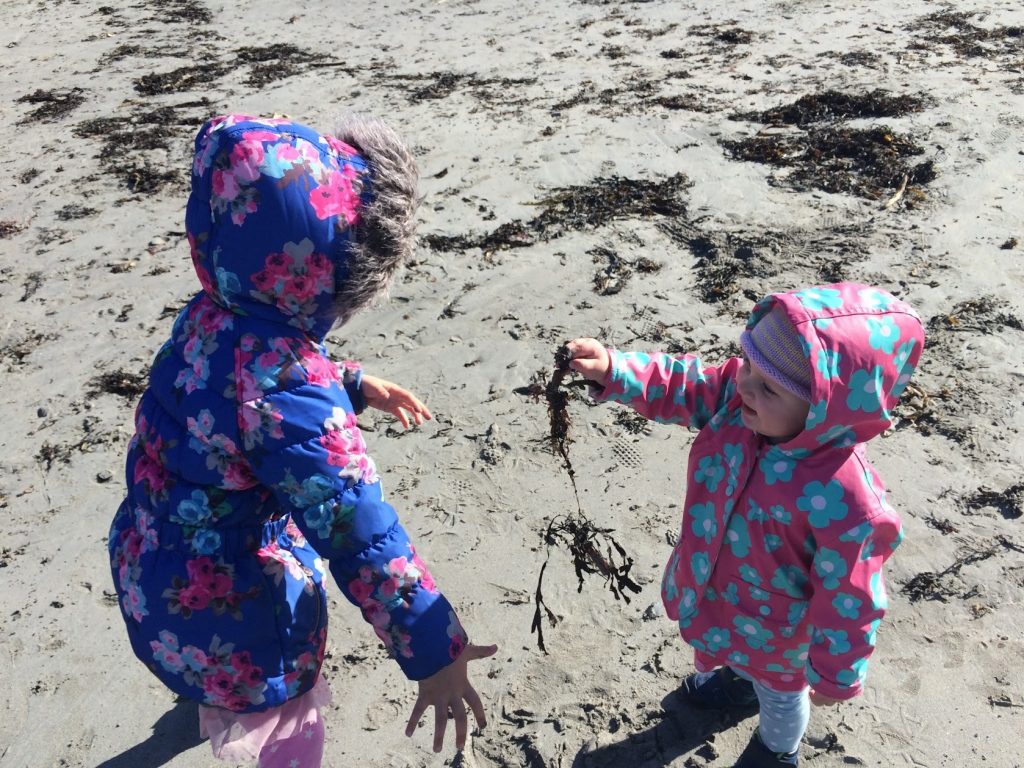
Living in the West of Ireland was wonderful but it was always going to be short-lived, and when time came to move again, we left that windswept edge of Europe for the heat of South Texas. This was a much more challenging relocation for many reasons (I did promise no politics, didn’t I?) so once again I turned to foraging to help me make sense of this new place and space.
Arriving at night after a long flight to San Antonio, it was hard to see anything beyond the neon lights and multilane freeways, but not long after turning onto quieter roads we had to stop suddenly for a mother deer nursing her fawn. Deer are everywhere in the city, living alongside urban sprawl in an astounding act of resistance. I couldn’t help but take this as a sign that beyond the car’s bright beams there was so much more for me to discover.
If I had thought Bristol was new, then this might as well have been Mars: the very next day I was sharing seats with green anoles, gothic cicada husks clung to everything, and I had to be mindful of not squashing praying mantis when taking out the trash (sorry, rubbish). It was all so different from anything that I had ever encountered and undeniably exciting.

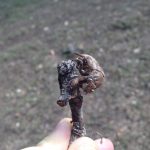
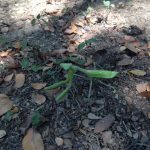
Rather than take this ‘alien’ landscape as a sign that I didn’t belong, I saw it as an invitation to learn. This deciphering of the environment was the first step in forging my own connection to it, to planting my own roots in this brand new soil. As someone who is greedy, (did I mention that?) I quickly purchased a book on foraging, and was soon out on the trails like an excited puppy on its first walk. There were so many new things to identify and try! Wild onion, much more delicious than store-bought, Texas persimmon for raw snacks, and cedar berries, which I am about to turn into jelly (it goes well with wild deer—sorry, all you deer out there but it’s true…) are all abundant on local trails.

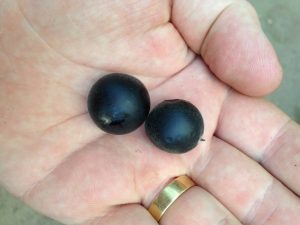
In a city crisscrossed by strip malls and overrun by restaurants and fast-food outlets, walking these green spaces is not just about connecting to them, but also to a past with those who walked these lands hundreds of years ago. South Texas was home to the Coahuiltecans, a name given by the early Spanish to the many diverse tribes that inhabited the area and then, later, came the arrival of the Lipan Apache, Tonkawa, Comanche, although little exists here to acknowledge their presence or their rights. Theirs was a connection to the very fabric of the earth, to its bedrock, its soil, and to the plants and animals that live upon it. This was not based on any sense of private property: the emphasis on the importance of nature is an integral part of the land back movement, and intertwined with its call to return jurisdiction to indigenous peoples. (Ok, so, perhaps, I broke my ‘no politics’ promise a little bit there…but that’s ok, I think.)
With my children being older now, I am able to bring them with me on more foraging adventures. And through their individual discoveries they can start their own journeys, making personal connections to this place that they now call home.
Together we have collected many things, the most enjoyable being pecans, and mesquite beans. Both tend to be abundant, and picking them up off the ground, rather than needing to climb or reach awkward places is perfect foraging family fun. Each has many uses; pecans can be eaten raw or used in many dishes that are uniquely Texan, although the classic pecan pie is my favourite, whilst mesquite beans are sweet and can be boiled to make syrup akin to maple, or dried and ground as flour. I even met someone who decorates them and hangs them up! Now that’s versatile, not to mention free!


Due to the arrival of COVID-19 these practices have been brought into sharper focus. With breakdowns in food production very much in my mind, foraging becomes a more responsive, maybe even necessary practice. Its ability to help feed the family by means that are outside of the traditional food chain is felt more keenly, and preserving, storing, and consuming what we gather becomes more than a pastime. Quite unbidden, ideas such as these were present during a recent picking of loquats from the trees growing by our house. Sorry, what? No, not kumquats, loquats. Originally from Asia, they are an enthusiastic transplant to this part of the world, much like myself. Less wild, rather more an integral part of cityscaping, they make an easy appearance in a multitude of gardens, car parks, and even school grounds; a useful tip-off from a kind Texan friend! This is a fruit that brings out a more urban aspect of foraging, especially important now that many places have ordered restrictions of movement, resulting in a greater need for ‘making do’ with whatever is to hand. Using loquat for the very first time last month I had no idea what to expect and this is a great example of how much foraging for the odd and new can yield.
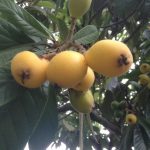
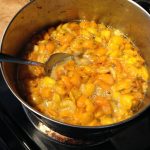

This small but versatile fruit has a taste and texture falling somewhere between pear, apricot, and peach, with a hint of rose hip when bubbling up in the pan (yum!). Where it really shines is its exceptional jam and its pairing with blueberries makes a truly memorable clafoutis. The chutney iteration is delicious with curries and cold meats and all of this is highly nutritious. What might have rotted on trees around my neighbourhood has now become treasure.
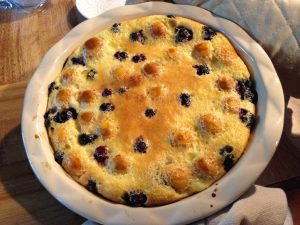
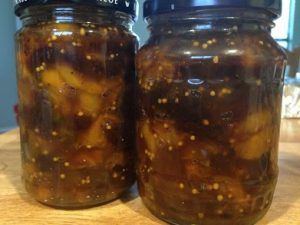
I was going to talk next about collecting nopales pads, succulent young stems from the cactus of the same name but as you can see below (left) someone’s beaten me to it. Many of the nopales cacti nearby have already been harvested by canny locals. I’ll have to content myself with waiting to gather its prickly pears which are heralded by bright yellow, or red flowers. I’ll be ready to return in time when this bloom has faded and the fruits beneath are a lovely deep purple ripeness.
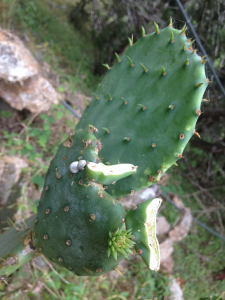
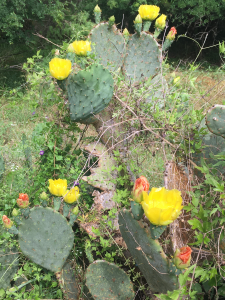
I might not have filled tummies from this expedition but I’ve learned patience and a reminder of the importance of early rising! This silent competition against unknown fellow foragers is undoubtedly another pleasure of this activity, albeit bittersweet. The feeling is very different, however, from the sight of empty supermarket shelves, a clear sign, now, of the relationship between pandemics and unsustainable and extractive modes of food production. Perhaps we can turn our attention to these other spaces, right beside us, for hope.
You might even find one of these four-leaved clovers if you’re lucky! And please excuse the dirty nails, in my defence, I was out foraging…
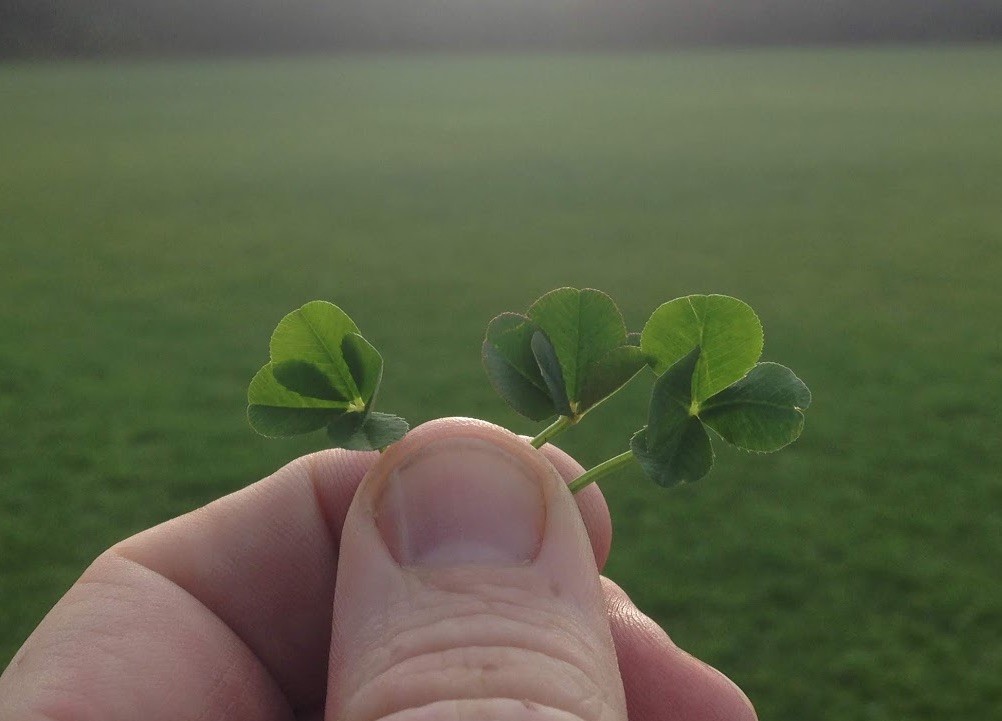
Quin Hyndman
Quin Hyndman is a writer, father, a forager, and a lover of food. He is trained in Ttouch, a rehabilitation therapy for animals, and is a certified Montessori teacher - http://www.ttouchtteam.co.uk/TTouchwhatis.shtml

